The journey starts at the mountain town of Leh. The only way to reach Leh is by flight and it is surrounded by snow giving it a complete white look. One can catch a glimpse of the snow capped mountains from the flight as it descends toward Leh which is located at 11400 feet above sea level. The trek is over the Zanskar River which lies frozen during the winter. The most preferred time to cross the ice would be in February. During that time, the ice tends to be at its most stable state. The Frozen River Trek begins from the small village of Chilling from where the Zanskar River begins to freeze.
Chadar Trek, one the most spectacular and majestic voyage, is filled with series of unforgettable adventures. It is a trek over the frozen Zanskar river, a journey that a person will remember for his lifetime. The idea alone of walking over a frozen river in one of the most beautiful places in the world sends chills down one's spine. It is a dream come true for any adventurist. In case of unforeseen weather conditions or government restrictions, certain activities may be cancelled or change of dates might happen, and in such cases the operator will try his best to provide an alternate feasible activity. However no refund will be provided for the same and in such cases the operator will try his best to provide an alternate feasible activity. However no refund will be provided for the same.
Altitude 11,400 ft. Stay in guest house. Keep your woollen cap and gloves handy. Flying over miles and miles of heavily snowed mountains will tell you just why it’s impossible to reach Ladakh by road in the winters. The moment you land at the Leh airport, one of the highest airports in the world, you will feel the fresh and crisp air, and a drastic drop in the temperature. The town has just begun shedding off the thick winter slumber and is slowly coming to life. Taking a stroll through the Leh market, you will find that very few shops and eateries in the town are open for business; but if required, some last minute-shopping for the trek can be done here. The chill in the air will serve only as a preview of the temperatures during this winter Trek. The night is spent in a copy guest house.
Acclimatization and Medical Checkup
Medical Checkup / NOC to be obtained from ALTOA and after NOC take insurance and wildlife department Permit.
10,390 to 10,550 ft. Trek 10 kms. Stay in tent. The biggest challenge of this day, and all the remaining days, is to get out of the warm toasty sleeping bags and go out into the giant freezer outside, but the steaming cups of tea being served provide ample motivation. Today is a long walking session, about 10 km, on the Chadar. The trek leaders give a briefing about the day, and give tips on how to walk on the Chadar. Depending on the weather, the Chadar can assume various forms. It can be a cold and hard surface of slippery ice, or it can have a dusting of snow over it, providing a good grip. The ice can be thick or thin, and its best to keep closely following the guide. The locals, it appears, have a sixth sense as to where exactly to step on the Chadar. At places, it might be necessary to wade through ankle deep water, or climb on the cliffs at the side of the river. Eventually you get used to walking on the Chadar, which looks like a cross between gliding and skating. Mid way to Gyalpo, the porter-cum-cooks prepare hot bowlfuls of soupy noodles for lunch. It is important to keep up a decent level of fluid intake. Nothing makes you adapt to the conditions faster than nicely circulating blood in your system. After passing Shingra koma, you reach the camp-site for the day at Gyalpo. The Gyalpo campsite is at a bend in the river, surrounded by high peaks and walls of rock-faces which almost look man-made. All that is left to do is to soak in the views, have an early dinner and call it a day.
10,550 to 10,760 ft. Trek 15 kms. Stay in tent. This day follows the same early morning routine: bed tea at 7, breakfast at 8, and quick-march at 8:30. Have a good breakfast, as today is the longest walk of the day – almost 15 km. But that is nothing to worry about, all the walking keeps you incredibly warm. Today’s walk through the deep ravines of the Zanskar is stunning. The sublime walls of the mountains on either sides of the river keep the sunlight away from the Chadar for most part of the day. There are numerous caves in these mountains, big and small. Today is the day when you can see frozen waterfalls, some higher than the others. As the fable goes, centuries ago the local villagers faced a dearth of water and went to Tibet to plead for water. They were given a box which they were to open once they reached the village, and not any time sooner. But curiosity got the better out of them, and when they opened the box, two fishes jumped out of it, creating two huge waterfalls. One of those waterfalls, miraculously, is not iced-up even in such freezing cold. The rocks below this waterfall are covered with moss, and this is the only greenery you’ll see on this trek. At Tibb, there is a big cave. This cave is the dwelling of all the porters, and they welcome you warm-heartedly in here. The highlight of the day is to share a cup of butter-tea with them!
10,760 to 11,150 ft. Trek 12.5 kms. Stay in tent. Attraction Frozen waterfall. Today is the most spectacular of all days on this trek. Walking on the river you cross deep gorges and reach a point where Juniper trees are covered with prayer flags. The porters give you a twig of this tree tied with a piece of prayer flag as a badge of good-luck and good-health. A few steps away stands the mother-of-all frozen waterfalls – a huge instance of suspended animation several feet tall and equally wide. You can see dozens of colours in this enormous ice structure as sunlight plays off its surface. Right next to the waterfall is a bridge across the river which is a part of the summer-time road from Zanskar to Leh. The Naerak village lies several feet above the river, a vigorous hour-long trek can take you to the village if you want to see the life of a Zanskari. The camp is set up close to the river.
11,150 to 10,760 ft. Trek 12.5 kms. Stay in tent. Today you start the return journey and go back to the Tibb cave. And if you thought that it was just a matter of retracing your steps back to Chilling, you can think again. The Zanskar River reacts to the slightest change of temperature, and constantly keeps repackaging itself. The Chadar would have assumed a completely new form, and will it will almost be impossible to say whether you have been here before. On the way, you can meet a lot of locals wearing their traditional woollen Gonchas – some of them monks who are hiking from the Lingshed Monastery to Leh, some of them young students accompanied by their parents returning to their schools in Leh after the winter vacation. Watching the locals negotiate the Chadar is a fascinating sight. They are suitably adept to the climate and seem very much at home in the sub-zero temperature and the biting cold winds. Nothing wipes the smiles off their faces and dampens the warmth of their spirit.
Stay in guest House. This is the last day of treading on the Chadar – the last chance to immerse in the pristine beauty of the frozen river. Once you reach Shingra Koma, it is time to say good-bye to the Zanskar and the Zanskaries.Our team and our porters will take good care of you and make this trek one of the most memorable experiences for you. Tonight you get to sleep in a warm guest-house again.
As this unforgettable journey gets over, you depart from Leh having a newfound respect for the Zanskaries who brave all odds and survive with style in their beloved land. This trek also leaves behind a tremendous feeling of accomplishment – one of having undertaken and endured an extraordinary and challenging trek. The Chadar trek will be a cherished memory for life.
*In case of unforeseen weather conditions or government restrictions, certain activities may be cancelled or change of dates might happen, and in such cases the operator will try his best to provide an alternate feasible activity. However no refund will be provided for the same.
In the event of cancellation of your booking due to any avoidable / unavoidable circumstances at your end, we must be notified of the same in writing. Cancellation charges will be effective from the date we receive the advice in writing, and cancellation charges would be as follows:
25000+ Pictures and Reviews on the platform.
We have a minimum price guarantee. If you get the same product at cheaper price we will refund the difference.
We have activities across 17 countries, across every category so that you never miss best things to do anywhere.
We are always able to support you so that you have a hassle free experience.
Chadar trek the Frozen River Trek begins from the small village of Chilling from where the Zanskar River begins to freeze. The ice can be as dangerous at times as it can be safe during others. One needs to figure out the safe paths over the precarious sheet and must always be aware of the ice conditions below the feet. The trekkers can choose to camp in the caves along the banks like the locals or set up tents where the ice is the most stable. The setting is close to twenty degrees below freezing point and decreases further after sundown as well. Warm and layered clothes are recommended as is being on the move as much as possible. These help invariably in keeping the body warm and prevent cold sores and also keep the blood from freezing.
It is always recommended to be aware of the ice conditions at all times. There are several factors to consider ensuring a safe journey. Most of these factors involve the conditions of the ice and the footing choices of the trekker. The precautions include:
The trekker must be aware of the ice sheet conditions.
There may be cracks in the ice which should be avoided.
Finding places with a coating of snow is the best place to walk normally.
Slippery ice can be found on several sections as well and should be walked on with utmost care.
Cracks may suddenly appear under one’s feet and it is required to run to more solid footing immediately.
The ice is not a trekker’s friend and one should always respect it and be aware of the conditions at all times especially while choosing the camping spot.
Trekking gear should be brought from home as there are not many places available at Leh during the winter where supplies can be bought. Food that can be preserved and made quickly such as instant noodles is an excellent addition. One should always have enough before starting off as it is recommended to be moving for the better part of the day in order to keep warm as well as keeping the journey in momentum. Ice picks, trekking boots, several layers of extra warm clothing are a compulsion in such conditions. Tents are recommended but optional as one can easily camp in caves like the locals who journey across the river. However, being a non-local, that idea may not be advisable and carrying tents is always commendable.
Before you start the trek, it is important to understand the implications of high altitude on your body. Be aware of symptoms of AMS (Acute Mountain Sickness) like mild headache, nausea and general discomfort.
If you feel any of these symptoms, inform the Guide on priority and follow his instructions. Every campsite has as stretcher, fully equipped first aid kit, oxygen cylinders to address the situation.
Weather is unpredictable in the Himalayas. Though we are always observant about the changing weather, no one can guarantee a snowfall, rain or Sun. Do understand that your security is of utmost importance to us and we will not proceed any further from the campsite if the weather is not favourable.
The decision of the Trek Leaders and Guides to proceed or wait for the weather to get better will be final.
Injuries Often, while trekking over difficult terrains, you might have minor injuries like leg sprain, bruises etc. Serious injuries like fractures or major cuts are very rare.
All our Guide are trained to handle emergencies and can tackle minor injuries with a well-equipped first aid kit. In case of serious injuries, the patient is carried on a stretcher to the nearest road-head and is led to nearest medical centre.
Lack of communication devices In the remote areas of the Himalayas, mobile networks do not reach. On a trek, one is cut off from the world of calls, SMSs or watsapps.
We rely on walkie-talkies and runners to communicate between the campsites and the base camps.
.Backpack (Rucksack) (60 ltr -70ltr) with comfortable shoulder straps, supporting frame and backpack rain cover .Trekking pole, .Thermo Plastic Water Bottle, Water Purifying Tablets, and Hot water bag, .Gumboots for Chadar Trek .3 pair of synthetic track pants .3 Full sleeve woolen tees with collar .Raincoat .Thick jacket and sweater, both full sleeved .2 pairs of thermal inners .Woolen monkey cap/balaclava that cover the ear, hand gloves + synthetic waterproof glove, head-scarf or muffler .2 pairs each of sports socks and woolen socks .Head Torch & with Extra Batteries .Cold cream and sunscreen lotion (SPF 40+) .Snacks like chocolate bars and dry fruits .Sun Glasses it should be U/V Protected .Toilet Kit (Toilet Paper) & Quick-Dry Towels .Personal and necessary medication .ID proof like driving license, voters ID card, passport .4 Passport size photos .Medical certificate from a recognized practicing doctor certifying your fitness for the trek .Indemnity certificate
Experience of any high altitude trek at least 1 trek The climber must be fit and have sufficient stamina to cover 5 km of distance in 45 minutes without a stress. The climber should be able to carry a 10 kg backpack. Heart problem, high blood pressure, asthma, and epilepsy cannot be reconciled on this mission. The climber must not have the conditions mentioned above.
"It was wonderfull experience."
 Simran
Simran
It was an amazing experience to be on Chadar with Geographic Tours. Every arrangements was good.We all friends appreciate the quality they manitained in such tough Situations . Looking forward for many more experiences. Thanks alott G.T
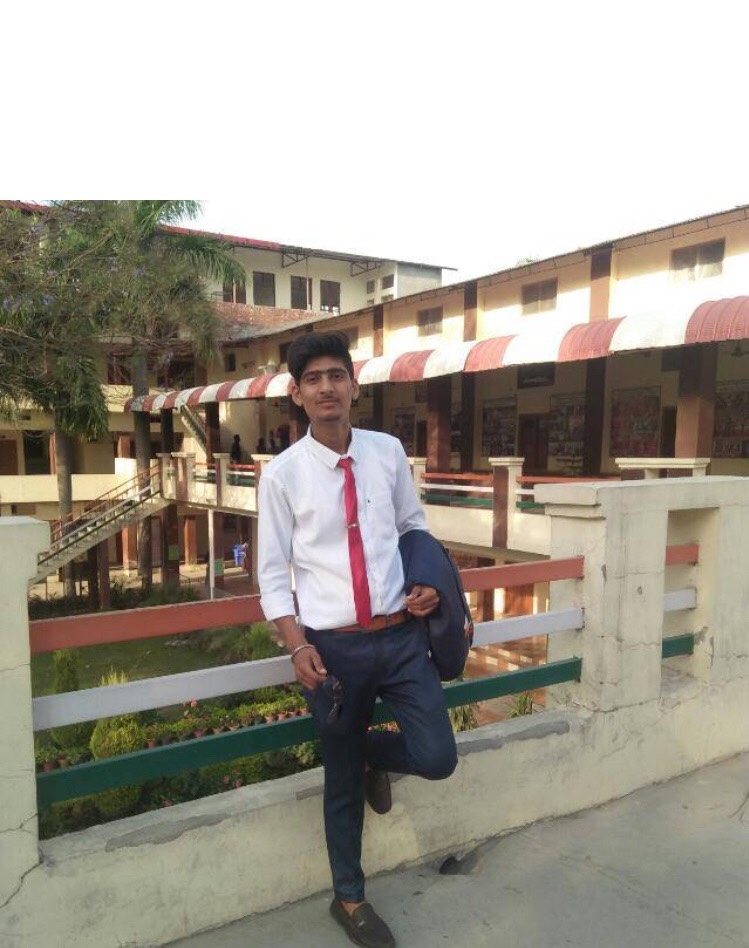 Mr. Vikas Jhah
Mr. Vikas Jhah
I would like to thank Mr. Salamat for designing such a wonderful trip to Manali. It was a great and well-arranged trip. This was the best travel agent experience I have ever had. We never had to worry or think about what we were doing next, or how we were going to do it, or how the quality would be, when you were involved. It was completely stress free tour for us. Thank you again for making my trip so enjoyable.
 Mr. Virender Kumar
Mr. Virender Kumar
I wanted to thank you very much for planning the tour of Ladakh for me and my wife. It was amazing and exceeded my expectations! We had a wonderful time their. Will look forward to work with you on our next Tour/Trip as well !
 Mr. Sushil Kumar
Mr. Sushil Kumar
Thank you Geographic Tours we have a awesome experience with you guys. Everything was good the camps ,trek leaders , hospitality , views ,food etc.Hope to be back with you again.
 Mr. Pasrija
Mr. Pasrija
Challenging trek which i did so far.This experience was absolutely brilliant. Tough time i had to convince my friends but we all had fun. Loved it .Hope to be back with you soon.
 Sana Aggarwal
Sana Aggarwal
Ladakh and its beauty is incredible. Being at the highest motorable pass i.e. Khardung-La. also climbing at the peak after a struggle, really makes you realise how small and insignificant you really are! Trek is beautiful. We have a great Experience.
 Anjum Rana
Anjum Rana
Just wanted to say thank you for your great work in booking our trip to Srianagr to Leh to Manali. We thoroughly enjoyed ourselves. All the arrangements and transfers worked like clockwork, I appreciate your efforts in making this happen.Everything well arranged, porters, guides everything was good. from hot water, hot food, medical kits , neat and clean sleeping bags everything was good..
 Vaishali Sharma
Vaishali Sharma
Me and my freinds enjoyed teh experience and the service.Without the supoort we might have collapsed. Thank you for helping make our once in a lifetime family trip something everyone will remember with affection.
 Mr. Sachin Patil
Mr. Sachin Patil
Must appreciate the efforts of the entire team for the smooth process.Thanks to Geographic Tours for all support.
Mr. Salamat , just wanted to say a big thank you from both of us. You have been extremely helpful, cooperative and responsive. Thanks to the trek leaders and the organisers for making sure that everything went through smoothly.
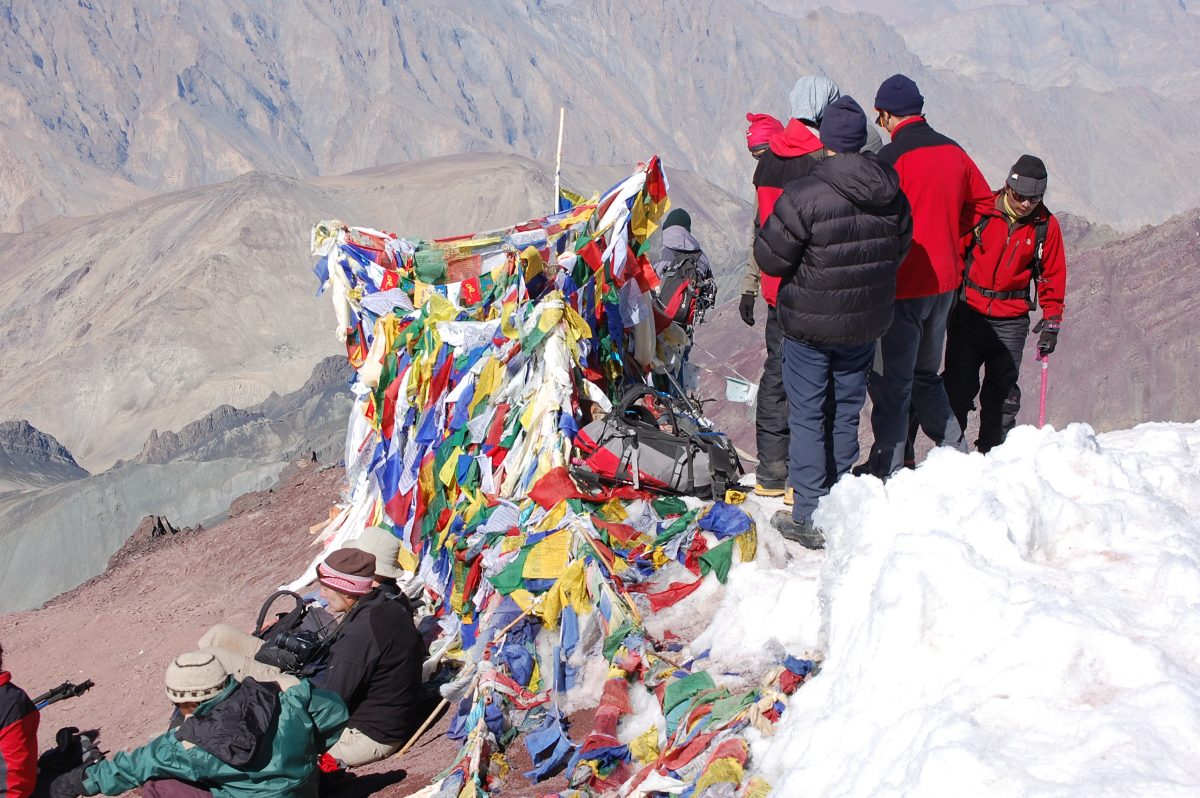 Mr. Vishal Kolhi
Mr. Vishal Kolhi
I did Stok Kangri trek with Geographic Tour and my experience was outstanding. The trek guide, leader and entire support team was extremely helpful. I successfully summit the mountain, a great thanks to Geographic Team.
It has been really nice interacting with you and we had a very comfortable and safe journey on the trip to Srinagar. The accomodation was very good and the transportation facility was excellent. Kudos to the Geographic Tours team for making it a memorable trip.
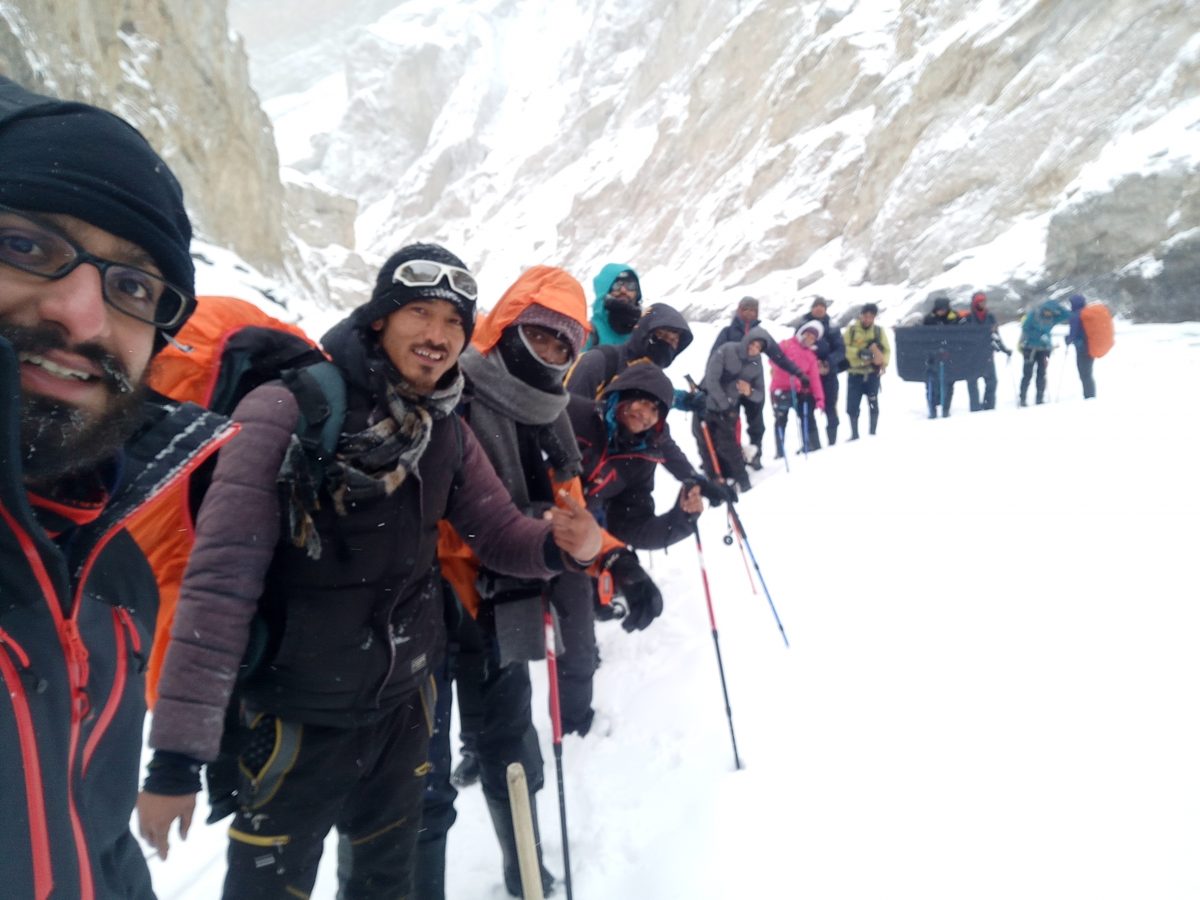 Akshit Raina
Akshit Raina
Our camping and trekking experience at Stok Kangri was really delight and as professional trekkers , it did not pose a major challenge for us and we want to keep participating in activities and treks like this, despite the difficulty level ! Thank you and cannot wait to plan our next family adventure.
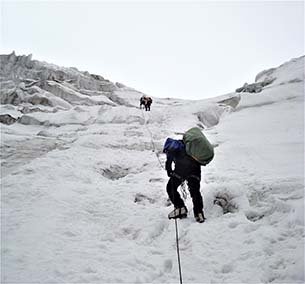 Mr. Sumit Sexena
Mr. Sumit Sexena
The Chadar Trek arranged was fantastic and trouble-free. Outstanding experience, well-arranged services, cooperative staff and beautiful memories! A trek to be remember always. I once again thank you for giving us your nice service.
Thanks for organising such a wonderful trip. We had the best time of our lives and the memories are going to stay in our hearts forever. Hotels were all very good and the pick and drop facility excellent. Food quality was little low but it was ok. I hope next time this will improve. Other things was quite good. We have really enjoyed the time. Keep up the good work !
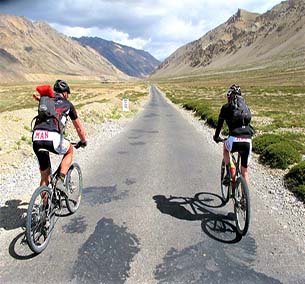 Mr. Om Prakash Singh
Mr. Om Prakash Singh
The entire tour package turned out to be good. The hotel accommodation provided in Leh and Manali was good. Even the shopping areas Mall Road, Leh Market were near to the hotel. The travel guide where pretty much on time and covered most of the locations. In all the trip was good.
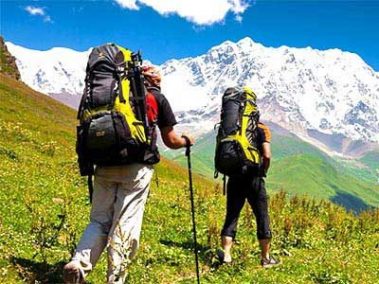 Mr. & Mrs. Dhawal
Mr. & Mrs. Dhawal
I would really like to thank you and your complete team for a wonderful honeymoon in LadakhThanks to Geographc Tours for their support & warm treatment. We Really enjoyed.
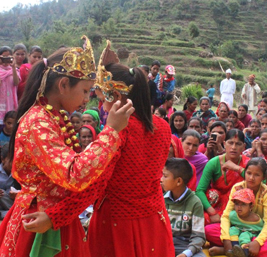 Mr. Ankur Randhawa
Mr. Ankur Randhawa
I just completed my tour of Leh-Manali arranged by you guys. The tour was very successful and I enjoyed it completely. Let me add that this was possible due to all help provided by youI appreciate your way of dealing with clients. Thanks again.
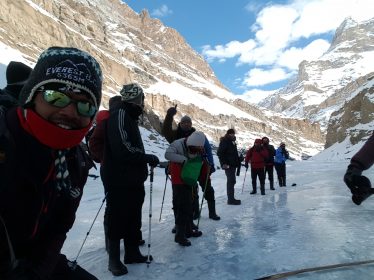 Mr. Abhijeet Jamwal
Mr. Abhijeet Jamwal
Hope to come back to Geographic Tours for future travel trips.
We enjoyed a lot. Once again, thanks a lot for your efforts and suggestions. I will recommend Geographic Tours to my Friends .
Hey this is hardik from Banglore. Well organized trek. Trek leaders were too good. All the porters and kitchen staff were really amazing. You can improve on better Guest House and Running hot water Faclity. Overall the experience was amazing as Chadar is a very beautiful place.
Thank you Guys. No complaints during my trip. Lovely group.
Hey guys wats up ? This is Ron from France. Recently I had done Chadr Trek with you. Each leg, each touch point, each adventure, felt like you and Fantastica planned it with care about our needs and expectations. Sometimes exceeding our expectations. Our hotels would be clean and accommodating, and that we had been guided by someone who knew the area, and had really listened to us. Thanks alott Geographic Tours for such a awesome and memorable Trek.
I am Annie from Mumbai. I have done Chadar Trek with you guys with my 3 Friends. We all appreciate your work , all the arrangements were superb. Thank you for helping make our once in a lifetime Friends trip something everyone will remember.
We were so satisfied with our tour of Ladakh, that we recommend to all of our friends and family to go with your Company for a memorable time.
Thank you, thank you so much for all your pre-planning and checking on everything for us, before, during and after this amazing adventure trip to Ladakh! We had a wonderful time and loved every minute! We truly appreciate all you did for us, making this trip of a lifetime an outstanding reality!
The fun and excitement of Climbing Stok Kangri, when you start your trip from leh. When reaching the trek base camp the eagerness to reach on top makes you excited and gives you the strength. It was just a beautiful Experience for me. Thanyou for giving us beautiful memories to cherish whole life.
Absolutely outstanding!
Thank you again for making my trip so enjoyable and pleasant . We look forward to Trek with you again.
We had a wonderful time …. I’ll be sure to be in touch if we can manage another trip to Ladakh. Thankyou Geographic Tours.
Just wanted to thank you for putting together a fabulous trip.
Hello Mr. Salamat, We had an absolutely stunning time. We loved the travel with the group around 18 which proved to be a quite compatible crowd. The hotel accommodations were absolutely superb! Thankyou for the memorable and best Trek.
We hope to travel with you once again in the future. Thank you Geographic Tours for creating Memories.
Hey I am Ankit from Bengluru. Me and my friends recently finished chadar Trek with you guys. We had an absolute blast! We’re already discussing another trip back this year. Thanks again 🙂
Just want to thank you so much for planning our first trip to Manali. It couldn’t be any more amazing and the most memorable trip of my life so far. I cannot wait till our next trip! We loved everything about the trip and hotel. Thankyouuuuu…
We had a great time on our vacation. The service, food and staff were excellent. I want to thank you again for all your help with the Kashmir Trip.
Your assistance was very much appreciated. The trip went well. The tours, transfers and breakfast were awesome. Take care and thanks for making our trip dreams come true!
Just wanted to thank you for our trip to Ladakh! My family and I had an unforgettable trip and the accommodations were awesome!
Thank you for giving me the opportunity to experience the Lifetime Trip. Everything and everyone exceeded my highest expectations! Thancxxx alotttt for everthing.
It truly was a trip of a lifetime.
The trip was absolutely amazing! We had such a great time exploring Ladakh. The food was really good. It was well organized, successful and enjoyable travel.
Thank you again for making my trip so enjoyable and pleasant. It was truly fun with you all.
Thanks for always making our vacation arrangements go so smoothly.
This trip is great and the hotel/staff/location is beautiful and magnificent. YOU ARE THE BEST. You did a very great job. Thak you for one of the best Trip.
Not at all expensive and absolutely wonderful. Thnkxx Guys for Everthing
Hey I am Nishant from Delhi. Everything goes along as planned without any problems, the tours are great. I will continue to travel with Geographic Tours and I do recommend them to my friends and family.
What a wonderful experience on this tour! Manali, our guide was outstanding. We would tour with Geographic Tours again without hesitation.
We are so glad that we went and we will do more tours with Geographic Tours in the future.
Our guide Rahim was fantastic and all the accommodations were perfect. I was impressed by the organization throughout. We all learned a lot and really enjoyed the experience.
Most important is that unlike other tour companies, their customer service is the best. Also we always feel safe when traveling with your Company . Thankyou Guys.
We were extremely impressed with you and felt that they really made the trip what it was for us and our whole group. I can’t wait to tell other people about my experiences and look forward to another trip with Geographic Tours.
Our trip was absolutely fantastic. the best hotels, travel guides, buses and meals. Best experience ever. Well done guys!
We are very happy with the entire experience of the tour. Good Job!
Thank you very much for the memorable experience to see Kashmir and Ladakh. Keep up the good work!
I was very pleasantly surprised with the arrangements included on this tour. Thanks !
I would like to personally thank you for have the patience to help me create a trip for 24 individuals.All the inclusions are superb. Thanks
It was wonderful! Thanks a bunch!! We’ll be contacting you again for future Trips/Tours.
I had a wonderful time.
Service, food, room, entertainment and activities were all very nice. We really didn’t want to leave Thank you Again
Thanks for making our trip dreams come true!
Yes we are back from our tour. Had a wonderful time, the services offered by you guys was excellent. Very good team work, hotel accommodations were excellent. Thank you for the wonderful professional services rendered to us. Thankyou!!!
Thank you very very much. We had a wonderful time and everyone appreciated all your arrangements. Of course there always have to be a few points but that is only an observation from all. Thanks once again for all your help.
We are back from a very pleasant trip to Ladakh. The hotel rooms were clean and spacious and the breakfast was superb. I would definitely recommend the hotel to your other clients.
So my experience with you all was really satisfying and it was handled very professionally. And we will for sure come back to you and take advice for next travel trip as and when we plan.
Thank you once again for all the arrangements!
Everyone was helpful and gave us correct guidance. Overall it was perfect and we had a great time.
We had created lot of memories and this was all made possible because of your management and I would surely recommend people to get the trip planned by GT.
Looking forward for more tours in future.
We had so much fun on this trip. Thankyou so mch from me and my wife.
Great thanks to everyone who made this vacation worth remembering.
I am Harinder from Delhi. I must appreciate your professional approach. Thancxxx for all the Things.
On behalf of Mrs Anne and myself I would like to thank you so much for organising and planning the beautiful Ladakh holiday . We had a super time and I must say the manner in which you planned everything was Fab. Thankyou keep the Great work done.
Thanks to you for a job well done. We had a great time catching up with our friends and are now back at work. We have enjoyed ourselves so much that all are now talking about travelling together again with hopefully some more to join next time around.
Thank you so much for the excellent service.
Your follow up and patience are admirable as is your service delivery.
Returned from a lovely tour to Kashmir Ladakh Manali. All your travel arrangements were perfect and efficiently executed and the tour was faultless.
Our thanks for your assistance.
We returned after a nice trip.The journey was very comfortable.Thank you for all the arrangements.
We, along with our families had a wonderful experience during our Manali trip. The trip was very well managed by you and everyone of us enjoyed. Thanks to you and your team for organizing our amazing Trip
We, along with our families had a wonderful experience during our Manali trip. The trip was very well managed by you and everyone of us enjoyed. Thanks to you and your team for organizing our amazing Trip
I and my family would want to thank you and your team on planning such a wonderful customised dream holiday to Ladakh.
Thanks for Everything during or Tour.
Thanks very much for a great service – which helped make our holiday in Srinagar a fantastic experience for us all.
Thank you for your organisation and we appreciated the effort that are made by you. Thankyou to make our trip such a wonderful experience.
You and your company did a terrific job planning and executing our vacation. We look forward to hopefully working with you again soon.
I’m writing to thank you for the well organised trip to Manali. My parents are very happy with the arrangements. I’ll definitely recommend your services to my friends
We were absolutely delighted with our trip to Ladakh; it was so varied and interesting.
So thank you and all your staff for all your hard work in providing us with the holiday of a lifetime!
I wanted to thank you for the excellent trip you arranged for us to Manali and Srinagar. The trip went by without a single snag. It was a wonderful, truly memorable experience for both my husband and me.
Overall both of us were more than satisfied with the trip.
Thanks once again for everything.
I was impressed with the high quality of your products and services on my recent visit to Srinagar which was perfectly arranged by your company.
Extremely Good and Keep It up!
Thank you for a memorable trip…everything was just so perfect 🙂
I am writing to thank you for the exceptional decor, entertainment and ground transportation services you provided. Everything turned out wonderfully!
Wanted to thank you for sorting everything out, all the arrangements ran flawlessly which added to make it a wonderful holiday. Will be back in-touch with you to sort out the next trip!!
The entire stay was lovely. The Hotel , everything was good.
Thanks for the Lovely Trip. We will always remember it. Thanks And Regards.
We look forward to working with you again if another event comes up.
We would certainly recommend your services to friends. You deserve to do well and you offer fabulous services. Thank you for making our trip so memorable
Thank you so much Salamt for the arrangements. We really enjoyed our trip of 5 days to Manali.All the arrangements were perfect and had no problem anywhere during the trip. Very well job done. Thank you!
We have returned from Leh. Thank you very very much, the trip was perfect. All your arrangements were excellent.
Thank you very much for the fantastic trip organised by you and your team , everything was well organised hotels were all good met some intersting people.
Please thank your team who has put their effort together to make the pleasant trip on my behalf. I am looking forward to another trip!!!
Many Thanks for organising my 10 days visit with family to Ladakh and Manali.
Your efficiency is commendable and your levels of service are very high. God bless you and thank you once again.
Thanks once again for everything. Keep up the good work.
The trip went off very well and we thoroughly enjoyed ourselves.
Thank you Guys for such great planning and you guys are our fixed travel agents for life.
Overall we had a great experience and worth all the money and effort put into it. We will never forget this vacation for sure.
Thank you and looking forward to seeing you soon!
Once again, many thanks from all of us and you truly deserve to take a bow!
Everything was well organised and well taken care of and the team has indeed enjoyed itself.
Thanks for a very well arranged trip. Everything went without a hitch, thanks to your perfect arrangements.
You made very intelligent and exceptionally efficient arrangements for us, for which we must thank you.
This is a sincere thanks from me and my family. Thanks once again for everything.
Thanks a lot. I was very happy with all arrangements, everything went off well and we enjoyed our trip to Manali , thoroughly. I will definitely come back to you for more such experiences.
We were lucky to have great weather, which made the trip all the more enjoyable! Thank you all again!
This short message to thank you all for your very professional and timely guidance, which allowed for a thoroughly well-planned vacation for our family.
Please do keep up the same levels in future.Thanksss al lottt for the Memorable Trip.
Thanks once again for the impeccable plan, tickets and every help for this memorable trip!! I hope we can plan more holidays with your help in the near future too!!
Thanks Dear for all the arrangements which were Excellent. Both our hotels at Manali and Leh were good.
The local guides who assisted us on day trips were also good. They were friendly and helpful. Even the drivers were good and explained a lot in each place. In all, our trip was excellent.
These services ran smoothly during my whole trip and for the same I would like to thank you Geographic Tours staff for efficient services.
It was a pleasure booking with you and your promptness, professionalism & comprehensiveness is very well appreciated. Look forward to working again with you in the future.
Thanks for the entire arrangements in Manali Srinagar Bike Tour. It was the most memorable trip for us. Everything was planned nicely, we didn’t encounter any problem. Thank you!
I would like to thank you for your great organisation and hard work.
Thanking you all once again. Kudos!!
I take this opportunity to thank you personally on behalf of my family who made the trip. Look forward to be associated with you in Future.
Thanks very much for organizing such a perfect holiday.
Thank you very much for planning a perfect holiday for my hubby and self.
Many thanks for arranging a wonderful trip… Honeymoon surely will be a memorable one!
I am extremely pleased with the entire tour, especially the way it unfolded. Thankyou so much for t5he Entire Trip.
We get to experience togetherness, love, serenity, fun, adventure and comfort. Thanks alott.
Thank You and We Love You!!!
Just a note to tell you we had a wonderful time! The hotels that you chose were good and the places wonderful.
We had a great time there! Our hotel was good, easily accessible and centrally located.
Many thanks for all of your help!
My wife and I thank you for facilitating a wonderful holiday in Manali.
We wish to place on sincere appreciation and extend our very best wishes for future and look forward for a long & healthy business relationship.
Thank u once again for making our trip so enjoyable, pleasurable and hassle free.
We thoroughly enjoyed our vacation.
Thank u once again for making our trip so enjoyable, pleasurable and hassle free.
It was a great time I had with you and thanks a million for everything.
I have travelled to few destinations with other groups, but never seen this kind of team. YOU ARE THE BEST.
Great working with you again – thanks again for everything.
I am happy that we work with companies like yours who go the extra mile to respond to the customers, thanks again.
We did not receive any negative feedback on any tours or guides or accommodation. Thank you very much for all your efforts and the great operation!!! 🙂
Thank you to all the Geographic Tours staff for making the trip a memorable one for all my friends. Well done.
It was just amazing the way you arranged everything for us for our trip. All was well planned and we did not waste a bit of time because of all the arrangements. You made our holidays memorable for our life.
Once again thanks for all the help. Everything went So planned. Thanks for your guidance and support.
We returned on Thursday after an excellent Motorbike Trip. There were no problems faced and everything went as planned. We would like to thank you for your help and cooperation.
I am writing to you behalf of all of us. We wanted to say a big “Thank You” to you for all your kind assistance in organizing a Manali Srinagar Bike trip. We had a very comfortable stay and we had a great time.
Staff was very courteous and helpful. Thanks again for organizing a wonderful trip to Ladakh!
I really appreciate your concern and efforts in servicing and taking the initiative so that your clients get the best service. Thankxxx alott,
Thank you guys this trip wouldn’t be this perfect without you guys. Looking forward to planning my next trip with Geographic Tours.
Hope you are doing well. We would like to thank you for your support provided during the Trip. Thankxx a ton.
Once again we would like to thank you so much for organising our perfect trip to Uttrakhand, we spent a wonderful time during our vacation.
We are back from a very pleasant trip to Manali. Thank you for sorting out our accommodation. We really enjoyed our stay at Lumbini Hotel in Leh. The hotel rooms were clean and spacious and the breakfast was superb. I would definitely recommend the hotel to your other clients.
Thanks for all your help and advice. Thanks alott or the Lovely trip.
Thank you very very much. We had a wonderful time and everyone appreciated all your arrangements. Thank you all.
Locations of all hotels was excellent as all were very central. Thanks once again for all your help.
Yes we are back from our tour. Had a wonderful time, the services offered by you guys was excellent. Very good team work, pick ups were always in time, hotel accommodations were excellent. Hope to use your services again in the near future.
Was very impressed with the speed and assuring words for the travel arrangements . My sincere GRATITUDE to you and YOUR TEAM, WELL DONE !!
Overall it was perfect and we had a great time. Thank you once again for all the arrangements!
It was an fanatic trip and very well arranged.
So my experience with you all was really satisfying and it was handled very professionally
We will for sure come back to you and take advice for next travel trip as and when we plan.
We are very much satisfied with your services and in future we will definitely be in touch with you and now you can add our name in your priority customers list.
we enjoyed a lot over there.
Thank you very much for your support. As always you have once again excelled in your perseverance to ensure the best service levels.
I would like to take this opportunity to thank you and your team for the excellent service, provided to me and my colleagues. Thankss alott.
Overall everything was well-done. Hats off. You really organized it very well. Once again thanks a lot for all the help.
I was told that most of the customers were delighted with the itinerary, arrangements and the choice of Hotels. I sincerely appreciate this efficiency.
I would certainly like to take your help in future and also recommend your organization as a choice of reliable tour operator. Wish you all the best.
Overall it was an exceptional holiday and a job well done on your part.
The entire experience was superb and the arrangements made by you along with your counter parts was impeccable.
The guide was co-operative and enthusiastic. Hotels were awesome. Thank u very much again.
Firstly a big thanks to you and your team for arranging for this wonderful honeymoon trip . The stay as well as the tour package was fab!
It was a pleasure to meet you and work with you in Ladakh Bike Trip. I look forward to working with you again in India and another successful operation.
The staffs’ care and attention shown to our passengers made it a very pleasant and memorable experience for them. Thankxxx Alottt for Everything.
Thank you for the highly successful Trip in Manali.
I would sincerely like to thank you for the wonderful service being offered to me and my wife with all the work. Once again thanks to you guys and look forward to your continued support.
We would like to thank you for arranging a wonderful trip to Ladakh.
I was thinking to give feedback on my own. But any way it was nice experience with your company specially because of you and Salamt. Planning was good.
Over all tour good and well suggested .
A very inspiring, elevating trip. Enjoyed seeing all the places we have read and heard about over the years.
You took an extra effort in making this vacation a memorable one for us. We all would like to Thank you All Once Again.
Keep up the good work and well done.
I am back from the tour of Ladakh. My husband and me enjoyed the trip very much.
I am satisfied with the service provided by your company and may take your services for our future trips.
We had a great holiday in Srinagar Ladakh. All the arrangements worked out very well. Thankyiu again for the Whole Trip.
Thank you very much for organizing a beautiful tour for us. It was one of our best trips.
It was a wonderful experience during my first trip to Ladakh. Thanks to Geographic tours for delivering as committed.
It was a great experience.
Thanks to Geographic Tours team for making such well planned trip.
Thank-you for giving us the opportunity to share our experience. Thanxxx alottt.
I appreciate very much all the efforts from you all.
We, along with our families had a wonderful experience during our trip .The trip was very well managed by you and everyone of us enjoyed. Thanks to you and your team for organizing our amazing Trip. Looking forward for future trips through Geographic Tours.
We, along with our families had a wonderful experience during our trip. The trip was very well managed by you and everyone of us enjoyed. Thanks to you and your team for organizing our amazing Trip. Looking forward for future trips through Geographic Tours.
We returned after a nice trip.
Thank you for all the arrangements.
The journey was very comfortable.
Returned from a lovely tour to Ladakh. It was perfect and efficiently executed.
Our thanks for your assistance.
Thank you Salamat for exceptional service and looking forward to an exciting future!
Everything came off without a hitch – what a thrill for this long awaited trip. We highly recommend your services.
My wife and I recommend your Travel Agency to our friends with confidence. Thank you for making all our trips so memorable.
Koshal We would like to thank you for your outstanding ser
Thanks for taking such good care of us. Looking forward to work with you again.
Just wanted to thank you for being so gracious and good to us!
You all did a great job helping me obtain a great rate as well as great times for travel.
Our Sincere Thanks to you and your Team.
My sister was absolutely thrilled! It was the trip of a lifetime for her!
Our trip to Ladakh was great. You were extremely helpful to me as we planned the trip. Thank you for all you did to make our stay in Ladakh so successful.
I would strongly recommend Geographic Tours Travel Agency for anyone that is looking for very helpful and extremely friendly travel agents.
I would strongly recommend Geographic Tours Travel Agency for anyone that is looking for very helpful and extremely friendly travel agents.
Just wanted to let you know what a wonderful time we had while in Manali Srinagar ladakh trip. It was due to you, and your excellent planning and recommendations.
I know everyone worked real hard on this. So give yourselves a pat on the back. Thank you.
Thanks for really great customer relations.
All of your staff were so happy my husband and I had such a good time.
We had the most remarkable family tour with Geographic Tours.
It was the best trip ever.
What a wonderful experience with you guys! Thanks alottttt.
The staff were lovely and attentive. Excellent. Everthing was beautiful.
It was a wonderfully organized trip.
I would highly recommend this company to anyone wanting a fun, relaxed, educational holiday with fine food – they will deliver!
Excellent. Our best tour operator yet. The itinerary was carefully thought through and well balanced. The trip represented great travel for the cost.
My experience, a week-long tour of Ladakh, was superb.
From initial contact, to booking, to superb coordination by the tour organizers, the excellent knowledge and wonderful humor of our guides, and the selection of tour sites, the trip was organized and run smoothly and with the interests and comfort of the participants always kept in mind. They are by far the best tour operator we have traveled with.
My wife and I have done many tours with a variety of tour companies. G.T is definitely the best.
This was my first visit to Manali ladakh, and it was wonderful. We had a tour manager, an expert guide and a local guide to take us round & show us the sites. The hotel was excellent, quiet & secluded.
This was a superb tour… beautifully crafted.
All in all, the perfect family trip.
It is the best holiday we have ever had. Many thanks for your meticulous attention to our comfort.
We will never forget this trip with Geographic Tours…and are already planning for another one!
Thanks for all your assistance.
We had an absolutely stunning time. We loved the travel with the small group of Chdar Trek.
I thank you so much for all that you did to make this trip so successful. Both rakhi and I would recommend you and your agency to anyone anytime!
I thank you so much for all that you did to make this trip so successful. Both my friend and I would recommend you and your agency to anyone anytime!
We had the most wonderful time at Ladakh Trip! What a perfect weekend excursion. Many thanks for all of your help.
Everyone had the most incredibly experience and the itinerary was appreciated by all. Look forward to continuing to work with you in the years ahead.
You guys did a fantastic job and I greatly appreciate it. Thank you again for making a historic trip. i greatly appreciate all the hard work you guys did.
Can’t tell you how much we enjoyed the trip. All worked so hard to make sure we were comfortable and taken care of well. We were so fortunate to team up with a great group of people
This trip went beyond our expectations and we wouldn’t hesitate to recommend it to anyone or to use Geographic Tours again.
Thank you for giving me the opportunity to experience the Lifetime Trip. Everything and everyone exceeded my highest expectations!I don’t know how you managed to put together such a cohesive group of people without ever having met us in Chadar Trek. Thanks for everything.
The tour itinerary was well-organized, extensive and varied. Our tour guide, was extremely knowledgeable and shared his knowledge with enthusiasm and humor. Last, but not least,our driver, kept us safe and comfortable. Thanks
It truly was a trip of a lifetime.
It truly was the experience of a lifetime and would not have been without you and your team.
I thank you so much for everything. You all did a remarkable job- thoughtful, responsive, thorough, joyful.
Mr. Salamat worked with me to put together a fantastic itinerary and everything was flawless. There was so much learning, laughing and love during our 10 days. Thanks alott everyone.
We all can’t wait to go back and we would have our adventure again. Thanks for putting together a wonderful trip.
We returned yesterday from our amazing trip to Ladakh. I just wanted to say thank you so much for everything you did to make this possible for us. I am so grateful to you and Geographic Tours for all you did for us.
Truly! You all went above and beyond to make sure our trip went smoothly and we appreciate it! More than you know.
We are home and fine…..what an amazing journey! Overall, the trip was simply amazing
All travel arrangements/lodging/meals/excursions really top of the line…..in every way.
Thank you…… for the most memorable Trip.
The trip exceeded my expectations. It was fantastic.
I want to thank you for a wonderful trip. It more than exceeded our expectations.
The trip was excellent.
Thank you, Salamat, for all your hard work to make the tour memorable. Please let me know if you need any other feedback.
We have enjoyed our trip to Manall and we are glad that we toured with Geographic tours.
We have recommended Geographic Tours to others and intend to continue to recommend Geographic Tours.
We had a great time with the group on our Stok Kangri adventure Trip. The tripr was well-organized and extremely informative. Thank you!
Our only problem was with the quality and presentation of the food. Eating food prepared for a steam table night after night was very boring and repetitive. Rest of the things are quite good.
The trip was fantastic and everything that Riya and I had hoped for.
My husband and I wanted to thank you for an extraordinary trip to Ladakh.
Again Salamat, thank you for all your efforts to make our dream trip… also a perfect one!
I just want you to know that we had an amazing trip!
We look forward to working with you again!
I also wanted to thank you for organizing an amazing family vacation in Ladakh. It went so smoothly and we had a really wonderful time!
Everything on the trip was perfect. The perfect place to take my family. Thanks for all that you did.
Trip was great!
Thanks for all your help. I may be sending some friends your way.
This was a wonderful trip to Manali.
I can’t thank you enough for planning this fabulous trip. Everything went smoothly.
This trip surpassed my expectations. I am so glad we booked it with you.
The trip was far more than I had hoped for and it will be one of the highlights of my life …
I had the BEST time ever.
It has been a pleasure and a privilege to be a part of this wonderful group in Chadar Trek.
Thank you for Experience of the Lifetime.
Jim and I wanted to express our gratitude to you for yet another wonderful vacation in Ladakhl! Everything went smoothly.
Again, thank you for everything you did on our behalf.
I had a great trip. Thankyou so mch for making it really memorable for me.
We want you to know that we had a fantastic time and it was all because of you!
It was just a wonderful, wonderful trip! Thank you for everything.
We have already recommended you to a number of people. Thancxxxx Guys.
We had a great time…
What a fantastic trip! Thanks Geographic Tours and whole Team for making this for us.
The Ladakh Manali experience was incredible and everything worked out perfectly.
Once again, a huge thank you for all your work and making us, as always, feel so special.
Not only were all the hotels wonderful, the touring, guides and personal attention to travels needs and safety were first clas. I would highly recommend to those clients who want something different.
Thanks for everything, you make it all so pleasurably.
What an amazing vacation we had. Everything was planned out perfectly, as only you can do. We had a lifetime of memories.
We all had the trip of a lifetime. Thank you again for all of your impeccable planning.
Thank you so much and when we plan our next trip to Srinagr or Ladakh I will be in touch with you.
By far one of the best vacations I have ever been on.
Great Trip Guys.
Awesome Experience. Everything was anaged very smoothly. Will love to visit again with you.